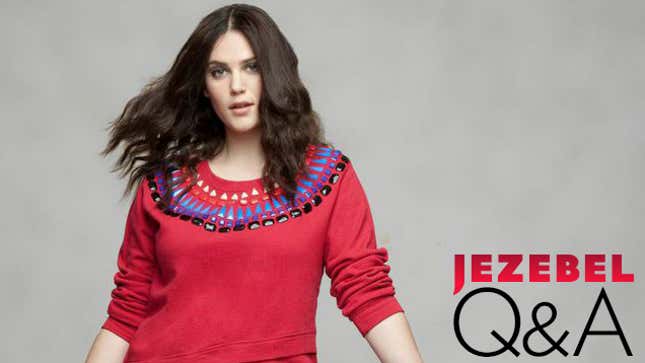Big Girls Want Bold Fashion, Too: An Interview With the Eloquii Team
In Depth

The plus-size business is taking off—brands are launching, models are breaking out, and people are finally paying attention. This is the first in a series of interviews with players in the industry; let us know if there’s anybody you want to hear from!
Back in 2011, before the plus-size clothing boom really got going, The Limited announced Eloquii, its very own offering for sizes 14 and up. Launched with much fanfare and greeted with enthusiasm, the line was nonetheless shuttered a year and a half later.
Now, the history of clothing for the rest of us is littered with corporate failures and flameouts. Eloquii is different, because it came charging back. A private investor named John Auerbach bought the brand, kept creative designer Jodi Arnold and hired retail vet Mariah Chase as CEO. Chase and Arnold relaunched the business as a fashion-forward ecommerce brand with trendier offerings and lightning-fast turnaround times—finally, a would-be Zara for plus-size women. Wonder of wonders! Sequins, crop tops, dark florals, body-con party dresses, jumpsuits; if there’s a trend you wanted to try but couldn’t find bigger than a size 8, they’ll hook you up. And for the more conservative dressers, they’ve got a broad array of midi skirts, blouses and dress pants, too.
Since hitting the market in February 2014, they’ve pushed their way into Nordstrom. Melissa McCarthy has popped up wearing their pieces. They’ve expanded to size 26. I talked to Arnold and Chase about how they did it.
Tell me a bit about bringing the brand back. People are very used to plus-size lines popping up, you moderate your expectations because you’ve seen so many failures, and it’s really rare to see one not just brought back, but return looking more fashion-forward.
Jodi: When The Limited made the decision to shut the brand in 2012, I had at that time gotten a LinkedIn invite from someone who is our investor, looking for an opportunity to invest in a plus-size brand, and so started talking to him at the same time The Limited closed Eloquii (as we call it) 1.0. Then I started talking to the team about the opportunity that he presented to bring the line back.
So over the summer of 2013, we had been given a settlement package from The Limited, so we started discussing where we thought the opportunity was, what we would do differently, the lessons we learned and just crafting a plan over those next few months to relaunch the brand. We started kind of working on it really solidly in September of 2013, Mariah came onboard in October and we launched in February.
That’s a really quick turnaround time—or is it?
Jodi: That’s a really quick turnaround. That’s part of our model, is to be fast-fashion. Most places, they go through the whole exercise of doing samples and then the buyer looks at the samples and decides whether to buy them. But in our case we’re sketching them and then the buyer is buying them or the merchant is buying it from the sketches that are going right into production. You’re probably cutting five months out of the cycle. We’re on a five and a half, six month turn now.
-

-

-

-

-

-

-

-

-

-

-

-

-

-

-

-

-

-

-

-

-

-

-

-

-

-

-

-

-

-

-

-

-

-

-

-

-

-

-

-










































